Plastering is a crucial aspect of home improvement, with several factors affecting the cost.
We will explore the importance of plastering, the types of materials used, and the factors impacting the overall cost.
Discover the benefits of hiring a professional plasterer and find tips on saving money on plastering costs.
Uncover everything you need to know about plastering in this article.
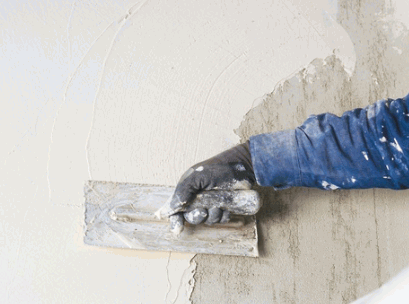
What Is Plastering?
Plastering is a crucial step in home renovation and DIY projects. It involves applying a smooth, durable finish to walls and ceilings to enhance the aesthetics and structural integrity of a property.
Various techniques are utilized in plastering, such as traditional wet plastering, dry lining, and the use of plasters like Gypsum and Lime. Each technique offers its unique benefits and is chosen based on the desired finish and the surface being worked on. Proper preparation of surfaces before plastering is essential to ensure adhesion and longevity of the finish. Professional plastering services not only guarantee a flawless result but also save time and effort for homeowners who might lack the experience or tools needed for a DIY approach.
Discover: How To Clean Walls After Plastering

Why Is Plastering Important?
Plastering plays a vital role in home renovation projects, not only enhancing the visual appeal but also providing a protective layer for walls and ceilings. It significantly improves the resale value of a property when considering house selling.
A well-done plastering job can help create a smoother and more seamless surface, hiding imperfections and giving a polished finish to walls and ceilings. This attention to detail adds a touch of sophistication to the interior of a home, making it more attractive to potential buyers.
Quality plastering work ensures that the surfaces are durable and long-lasting, reducing the need for frequent repairs and maintenance. This can be a major selling point when marketing a property, as buyers are often willing to pay more for a home that has been properly maintained and cared for.
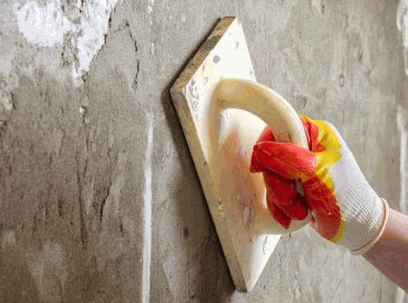
What Are The Different Types Of Plastering?
There are various types of plastering techniques used in construction and DIY projects, each tailored to specific requirements and finishes. Understanding these different types is crucial for achieving desired results and maintaining a property’s integrity.
Among the common plastering methods are:
- Skim coat: involves applying a thin layer of plaster to create a smooth surface, ideal for walls and ceilings.
- Float finish: provides a more textured look, commonly used in exterior applications.
- Textured plastering: adds depth and visual interest to surfaces, perfect for creating unique finishes in interior spaces.
Each method offers distinct advantages based on the desired aesthetic and practical needs of the project.
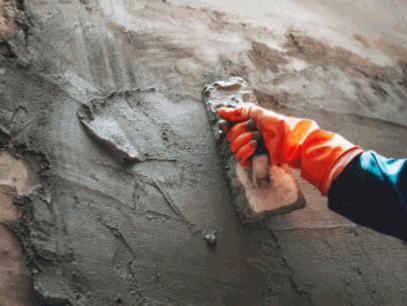
What Factors Affect The Cost Of Plastering?
Several factors influence the overall cost of plastering projects, ranging from the type of plastering material used to the size of the area to be plastered. Understanding these cost determinants is essential for effective budgeting and project planning.
Material expenses play a significant role in the overall cost, as different types of plastering materials vary in price, from standard options to premium formulations. Labor costs also factor in heavily, with skilled plasterers commanding higher rates for their expertise. Additional services such as surface preparation, finishing touches, or intricate designs can add to the total expenses. To save on costs, consider sourcing materials from reputable suppliers, obtaining multiple quotes from plastering professionals, and optimizing the project timeline to minimize labor hours.
Type Of Plastering Material
The choice of plastering material significantly impacts the cost and quality of the final finish. Opting for high-quality materials like washable paints can increase the overall expenses but offer long-term durability and maintenance benefits.
Other common plastering materials include lime plaster, cement plaster, and acrylic plaster. Lime plaster is environmentally friendly and allows walls to breathe, but it requires a longer drying time. On the other hand, cement plaster is durable and provides a strong base, but it may develop cracks over time. Acrylic plaster, known for its flexibility and fast-drying properties, is easy to clean but may not be as breathable as lime plaster.
When choosing a plastering material, consider factors like project timeline, budget constraints, and desired aesthetics. The selection of the right material can ultimately impact the overall project costs and the final appearance of the surfaces.
Size Of The Area To Be Plastered
The size of the area requiring plastering is a crucial cost determinant, as larger surfaces will require more materials and labor, leading to higher overall expenses. Calculating the square footage accurately is essential for budget estimation and project planning.
When dealing with extensive plastering projects, such as renovating a large commercial space or a significant residential property, the scale of the area becomes even more impactful on costs. Large projects typically involve higher square footage measurements, translating to increased requirements for plastering materials and skilled labor.
Efficiency is key in managing expenses for sizable plastering endeavors. One cost-effective strategy is to collaborate closely with suppliers to secure bulk discounts on materials when purchasing in larger quantities. Utilizing advanced technology like computer-aided design programs can help optimize material usage, reducing wastage on expansive projects.
Complexity Of The Project
The complexity of a plastering project, such as intricate designs or hard-to-reach areas, can significantly affect the overall cost. DIY enthusiasts should consider the project’s complexity before deciding to undertake the task themselves.
One essential aspect to be mindful of when dealing with complex plastering projects is the potential impact on both time and budget. The intricate designs or hard-to-reach areas may require specialized tools, additional materials, and a longer timeframe for completion. This can lead to unforeseen expenses and delays if not properly managed.
To effectively navigate these challenges, DIY enthusiasts should start by thoroughly planning and researching the project. Understanding the intricacies involved and creating a detailed timeline can help in estimating costs more accurately and allocating sufficient time for each task.
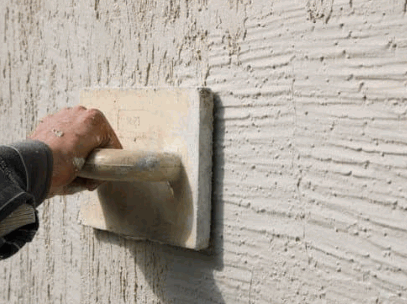
Condition Of The Walls
The condition of the walls before plastering plays a crucial role in determining the overall project cost. Repairing damaged walls or addressing existing issues prior to plastering can impact both the timeline and budget significantly.
Walls with structural problems or inconsistencies may require extensive repairs, such as fixing cracks, filling gaps, or replacing damaged sections. These preparatory tasks are essential to ensure that the plaster adheres properly and creates a smooth, even finish.
The type of surface treatment needed, whether it’s a base coat, finish coat, or decorative texture, can vary based on the condition of the walls. Proper wall preparation not only enhances the aesthetic appeal of the final result but also contributes to the longevity and durability of the plastered surface.
Labor Costs
Labor costs constitute a significant portion of the overall plastering expenses, with skilled laborers typically charging based on project complexity and duration. Understanding labor cost structures is essential for accurate budgeting and cost estimation.
Factors influencing labor costs in plastering projects include the skill level of the workforce, prevailing wage rates in the region, project location, and the scope of work required. Skilled plasterers with years of experience may command higher fees compared to entry-level workers.
Effective negotiation strategies can help in managing labor costs in plastering projects. This includes discussing payment terms, considering volume discounts, and clearly outlining expectations to ensure a fair and competitive fee.
Additional Services Required
Additional services, such as priming, painting, or decorative finishes, can add to the overall plastering costs. Assessing the necessity of these services and their impact on the project budget is essential for effective cost management and quality outcomes.
Priming is a crucial step that prepares the surface for painting, ensuring better adhesion and a smooth finish. Hiring professionals to handle this task can streamline the process and elevate the final result.
Regarding painting, selecting the right colors, textures, and techniques can significantly enhance the aesthetic appeal of a space. Incorporating painting as part of the plastering project opens up endless possibilities for customization and style.
Opting for decorative finishes, such as faux painting or stenciling, can transform plain walls into works of art, adding a unique touch to any room.
What Are The Benefits Of Hiring A Professional Plasterer?
Hiring a professional plasterer offers numerous advantages, including superior quality workmanship that ensures a flawless finish and long-lasting results. The expertise and experience of professional plasterers can make a significant difference in the outcome of a plastering project.
Professional plasterers possess a deep understanding of various plastering techniques and materials, allowing them to select the most suitable options for each specific job. Their attention to detail ensures that every surface is impeccably prepared before applying plaster, resulting in a smooth and even application.
Skilled plasterers have honed their craft through years of experience, enabling them to tackle complex projects with precision and efficiency. Their expertise in repairing cracks, smoothing rough surfaces, and creating decorative finishes adds value and beauty to any space.
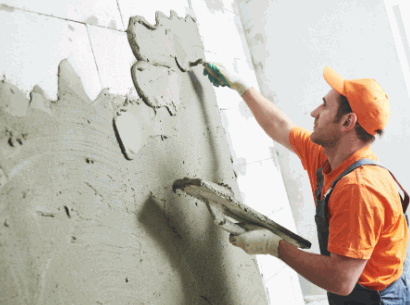
Quality Workmanship
Professional plasterers are known for their commitment to quality workmanship, ensuring that every detail is meticulously executed to achieve a seamless and durable plastering finish. Their extensive knowledge and skills contribute to superior outcomes in every project.
One of the key aspects that set professional plasterers apart is their ability to understand different types of plaster and how they interact with various surfaces. This knowledge allows them to select the right materials and techniques, ensuring a high-quality finish that stands the test of time.
Professional plasterers possess a keen eye for detail, enabling them to spot potential issues early on and address them before they become more significant problems. Their expertise in surface preparation, applying plaster coats, and finishing techniques results in a smooth and flawless appearance that enhances the overall aesthetics of any space.
Time And Cost Savings
Engaging professional plasterers can result in significant time and cost savings for homeowners, as experts can efficiently complete projects within deadlines and budget constraints. Their streamlined approach and expertise minimize delays and expenses.
By entrusting your plastering needs to professionals, you are not only ensuring a high-quality finish but also safeguarding your investment in your home. The convenience of having skilled plasterers manage your project allows you to focus on other aspects of your life, knowing that the job is in capable hands. Professional plasterers possess the tools and knowledge to address any unforeseen challenges swiftly, keeping the project on track without inflating costs.
Proper Tools And Equipment
Professional plasterers come equipped with the necessary tools and equipment to deliver exceptional results, from trowels and mixers to scaffolding and safety gear. Their access to specialized tools enhances efficiency and precision in plastering projects.
High-quality tools are essential in achieving a smooth and durable finish on walls and ceilings. The use of top-grade plastering tools not only ensures a professional-looking outcome but also speeds up the project timeline significantly. When proper safety gear, such as dust masks and safety goggles, is utilized, it minimizes risks of injuries or health hazards for the workers, making the job environment safer and more conducive to productive work.

Knowledge And Experience
Professional plasterers bring a wealth of knowledge and hands-on experience to every project, allowing them to tackle challenges effectively and deliver superior results. Their expertise in various plastering techniques and materials ensures top-notch craftsmanship.
By honing their skills over years of practice, professional plasterers gain insightful mastery of the intricacies of their craft. This depth of understanding enables them to identify the most suitable techniques and materials for each unique project, ensuring both durability and aesthetic appeal. Their experience equips them to anticipate potential issues that may arise during the plastering process, allowing for quick and effective problem-solving. This combination of knowledge and practical know-how is what sets seasoned plasterers apart in the industry, consistently producing high-quality finishes that stand the test of time.
How Can You Save Money On Plastering Costs?
There are several strategies homeowners can employ to reduce plastering costs without compromising on quality. By carefully managing expenses, negotiating prices, and exploring cost-effective alternatives, individuals can achieve cost savings while enhancing their living spaces.
One key tip for cost-effective plastering is to compare quotes from multiple contractors to ensure you are getting the best deal. Consider sourcing materials yourself to potentially lower costs. Negotiating with contractors can also lead to discounts or flexible payment plans.
Opting for ready-mix plaster or self-mixing can be more budget-friendly than traditional plastering methods. DIY enthusiasts might find that taking on certain tasks themselves can further reduce labor costs.
Get Multiple Quotes
Obtaining multiple quotes from different plastering contractors allows homeowners to compare prices, services, and quality offerings. This practice enables well-considered choices and provides opportunities for negotiation to secure competitive rates.
By gathering quotes from various professionals, homeowners can gain insights into the current market rates and the range of services available. Comparing these quotes not only helps in determining the most cost-effective option but also ensures that the chosen contractor aligns with the specific requirements of the project.
Evaluating multiple quotes can reveal hidden costs or discrepancies in the scope of work, allowing for transparent discussions with the contractors. This process gives the power to homeowners to make well-informed decisions and select a contractor who offers the best value for their money.
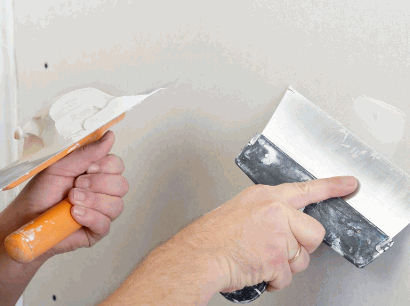
Choose A Reputable Plasterer
Selecting a reputable and experienced plastering service provider is essential for ensuring quality outcomes and reliable results. Working with established professionals reduces the risk of subpar workmanship and guarantees customer satisfaction.
Whether you are renovating your home or starting a new construction project, the craftsmanship of a skilled plastering contractor can make a significant impact on the overall aesthetics and durability of your property. With reputable services, you can rest assured that each detail of the plastering process, from preparation to finishing touches, will be handled with precision and expertise.
A trustworthy contractor will prioritize clear communication, transparent pricing, and adherence to project timelines, providing you with peace of mind and ensuring a smooth and efficient experience. By choosing a reliable service provider, you can avoid costly mistakes, unnecessary delays, and potential safety hazards, leading to a successful and visually pleasing outcome.
Consider DIY Options
DIY enthusiasts can explore cost-effective plastering solutions for minor projects or touch-ups, provided they have the necessary skills and tools.
Undertaking these small-scale plastering tasks independently offers homeowners a sense of accomplishment while transforming their living spaces. Experimenting with different plastering techniques allows individuals to gain valuable hands-on experience and develop their craftsmanship. With the right preparation and attention to detail, even beginners can achieve professional-looking results.
Utilizing online tutorials or consulting with experts can provide additional guidance for those venturing into DIY plastering projects for the first time.
Negotiate The Price
Effective negotiation skills can help homeowners secure favorable pricing and discounts on plastering services. Engaging in open discussions with contractors and being willing to explore pricing options can lead to cost savings without compromising on quality.
When negotiating with plastering professionals, it’s important to clearly outline your requirements and expectations. By setting a budget range and asking for detailed quotes, you can better understand the breakdown of costs and identify areas where adjustments can be made. It’s also beneficial to inquire about any potential discounts or special offers that the contractor may provide. Remember, negotiation is a two-way street; be prepared to offer flexibility on certain aspects in exchange for better terms elsewhere.

